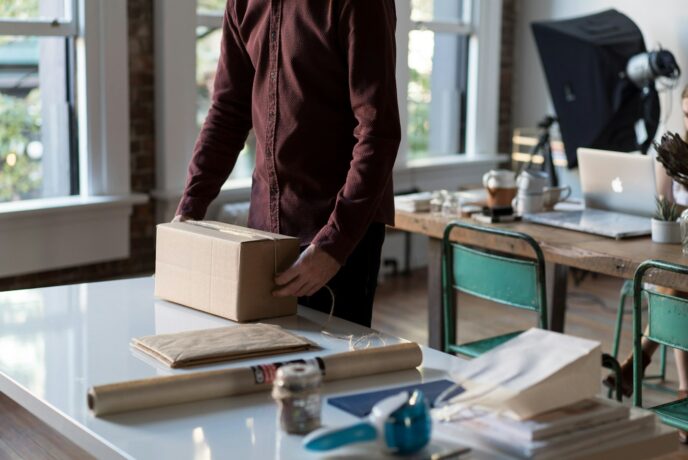
There’s a moment in every business where growth flips from thrilling to… terrifying. Orders pile up, emails start pinging faster than you can open them, and suddenly the delivery system that once worked fine feels like it’s held together with tape and optimism. It’s the sort of chaos that comes not from failure, but from success arriving faster than your infrastructure can keep up.
A lot of teams hit this wall. Some crash into it and spend months untangling the mess. Others, the lucky few, spot the cracks early and fix them before things start to break. They usually have one thing in common – they respect logistics. The companies that take delivery seriously, that look for reliable partners like couriers Texas instead of just “whoever’s cheapest,” tend to survive the scaling storm. Because speed is nothing without stability.
So, before your next big surge, it’s worth slowing down and asking: what could go wrong? Here are five places where growing delivery operations often trip up – and what to do about it.
- Overreliance on a Single Carrier
It’s comfortable sticking with one courier. You know their system, their quirks, their prices. But that comfort turns into risk once volume ramps up. If that single carrier has a delay, a driver shortage, or a system outage, your entire business stops moving. One bad day on their end becomes a nightmare on yours.
The smarter route is spreading the load. Call it diversifying suppliers, or just plain common sense. Maybe you keep your main partner but add a regional courier for urgent runs, or a specialist for oversized items. It’s the difference between having one bridge across the river or three. When the floods come, you’ll be grateful for the detours.
- Ignoring Regional Variation
What works in one city can flop spectacularly in another. Delivery routes, driver availability, even how customers expect to be contacted – they all shift when you cross regions. A plan built for compact urban routes won’t translate cleanly to long rural stretches, and yet many companies try to scale with a copy-paste approach.
It’s better to think local even as you grow national. Build relationships with regional couriers who know the backroads, the quiet shortcuts, the quirks of traffic flow. It’s why agile local networks – like couriers Texas and others – have become so valuable to growing businesses. They bridge the gap between corporate scale and street-level precision. Because at the end of the day, delivery happens one doorstep at a time, not one spreadsheet.
- Poor Data Visibility and Tracking
You can’t fix what you can’t see. And yet plenty of businesses run their delivery systems half blind. A package disappears, nobody knows where it went, and customer service ends up apologizing without answers. It’s an awful feeling – and a totally preventable one.
Real visibility isn’t a luxury now; it’s the baseline. Investing early in real-time tracking gives teams a fighting chance to catch problems before they balloon. A driver gets stuck in traffic? Reroute the next delivery. A shipment’s delayed? Update the customer before they even notice. That tiny gap between silence and communication – that’s where trust lives. Miss it too many times, and customers don’t come back.
- Underestimating Reverse Logistics
Returns are like gravity – inevitable, often annoying, but impossible to ignore. The moment orders start flowing out faster, returns start coming back just as quickly. And if you haven’t planned for that, the “backward” motion can choke your system faster than anything.
The best operators treat returns like a mirror image of their forward logistics. Dedicated pickup slots, automated authorizations, easy labeling – all that boring admin stuff that makes customers sigh in relief. The more friction you remove, the better. Not because returns make money, but because how you handle them tells customers what your business is really made of when things don’t go right.
- Neglecting Contingency and Communication Plans
Here’s the unglamorous truth: at some point, something will break. A van will fail, weather will turn, a key driver will call in sick. The companies that survive those moments don’t necessarily have the fanciest tech – they have a plan.
Contingency planning doesn’t mean writing a 50-page manual. It’s more about mindset. Who calls the shots if the main depot goes down? How do you keep customers informed when half your routes are frozen? Having those answers ready makes the difference between a temporary snag and a viral complaint thread. In logistics, silence is the real killer. People will forgive delays. They won’t forgive being ignored.
Wrapping Up
Scaling isn’t about speed; it’s about control. It’s easy to look at expansion as a race, but the reality is closer to a juggling act. You don’t win by throwing faster – you win by not dropping anything.
Every pitfall here comes back to the same root cause: businesses forgetting that logistics is a living system, not a line item. You have to feed it, stress-test it, and talk to it when it starts to wobble. If you keep that in mind – and stay curious about new business updates and trends in operations – your company’s next growth spurt doesn’t have to come with a headache. It might even be the smoothest chapter yet.



